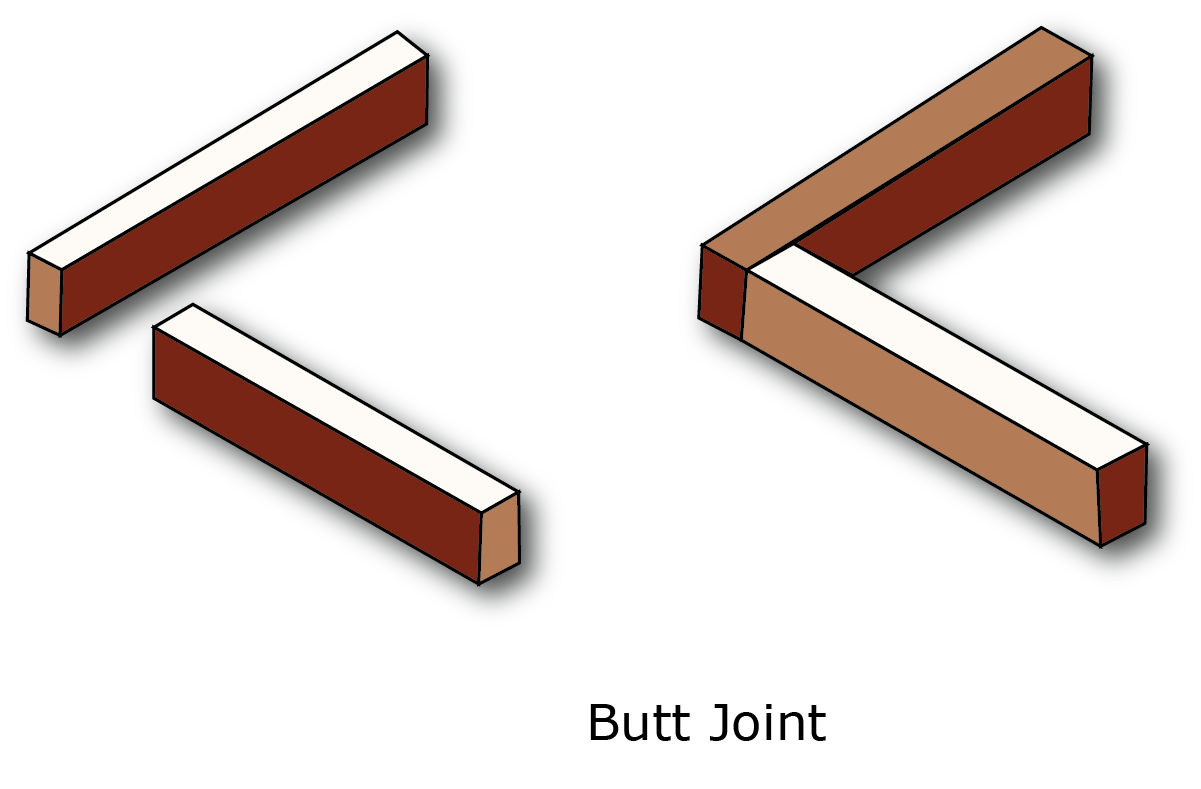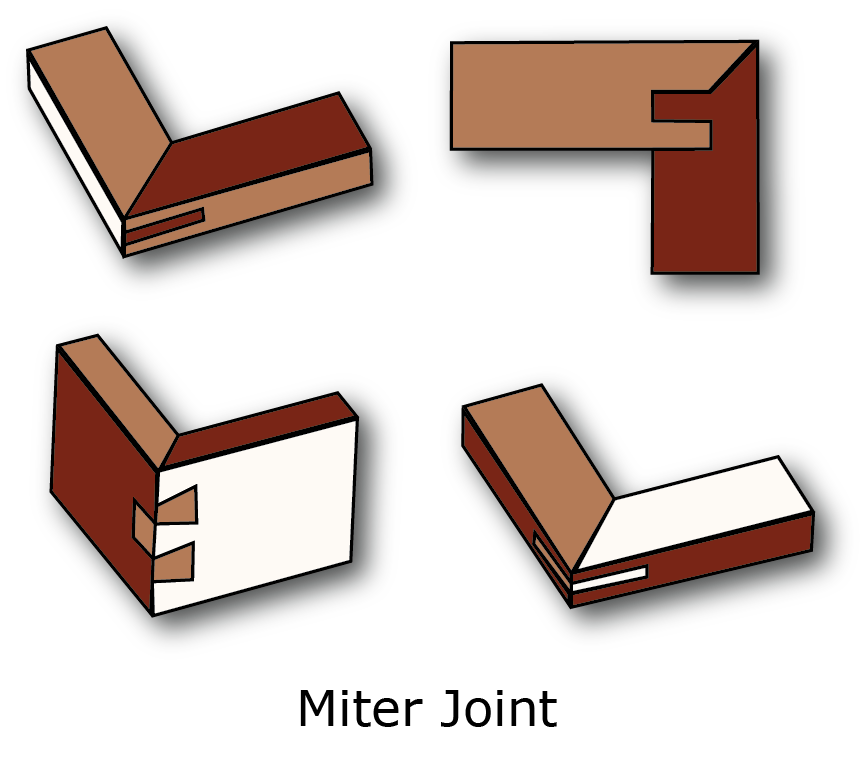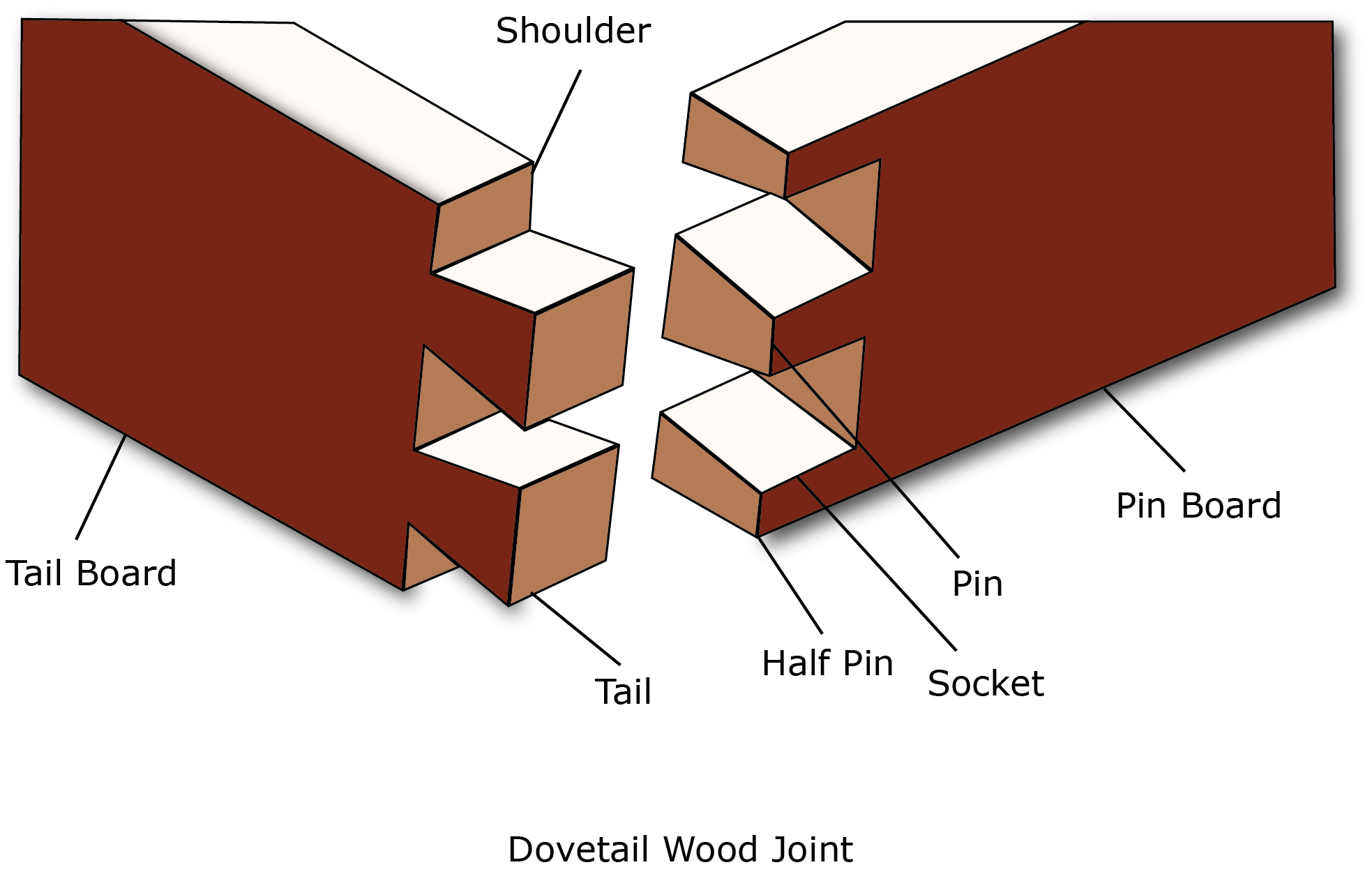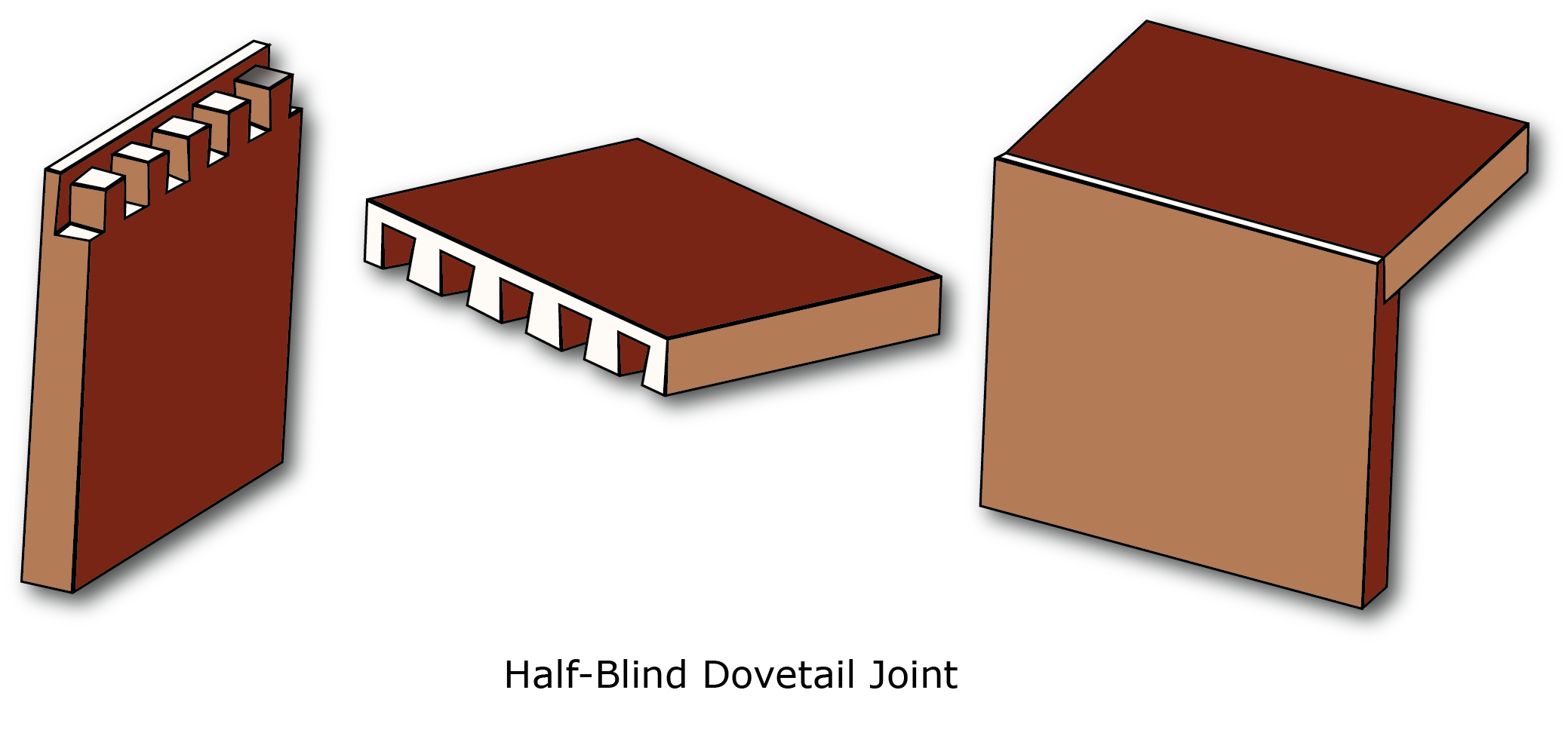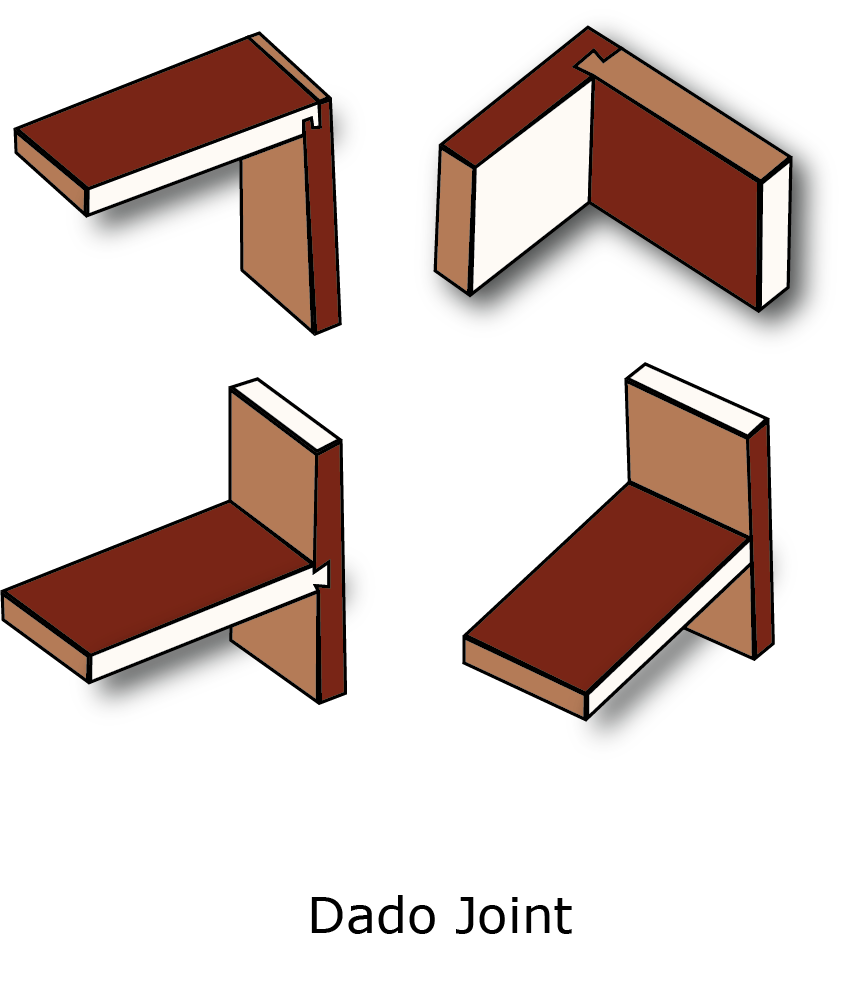Wood Joinery at CabinetNow
Wood joinery is one of the most basic and important parts of woodworking. Without being able to join two pieces of wood together, every piece of furniture would be a single, solid wooden sculpture. And so, over time master carpenters and other artisans have developed dozens of ways to join pieces of wood together.
At CabinetNow, we use a few different woodworking joint techniques to provide you with the strongest possible products. In this quick guide, we are going to take a look a the different types of wood joint constructions that we have available for you!
Cabinet Doors and Drawer Fronts
Our cabinet doors and drawer fronts can be ordered in 3 different joint construction styles. If you are only interested in refacing a few doors or drawer fronts, then you will want to match the style you already have. However, if you are planning a kitchen remodeling project, then you have the freedom to choose the joint style that you prefer. For our cabinet doors and drawer fronts, we offer cope-and-stick joints, miter joints, and slab-style construction.
Cope-and-Stick Joint
One of the most common joint construction methods for cabinet doors, the cope-and-stick technique joins two pieces of wood at a 90-degree angle. This means that the rails, or the horizontal pieces of the frame, fit between the stiles, or the vertical pieces. A great example of this joint style being used is the Shaker cabinet door.
The cope-and-stick joint is also often referred to as a butt joint, or basic butt joint. However, this can be a bit misleading. The basic butt joint can be accomplished without cutting the material, but a cope-and-stick style cabinet door is a bit more complicated. This method uses tongue and groove joints to secure the stiles, rails, and center panel together. The cope-and-stick construction creates a stable, strong bond between the pieces of the cabinet door. This style of door construction is found in many transitionally styled kitchens.
Miter Joints
Like the basic butt joint, the miter joint has been around for centuries. For this construction, the stiles and rails will be joined at a 45-degree angle. This means that the stiles and rails will be the same size. The miter joint, also known as a mitered butt joint, is preferred when you want to conceal the end grain of the adjoining pieces.
Like our cope-and-stick cabinet doors, our cabinet doors with mitered joints use the tongue and groove method, so that the stiles and rails are able to securely hold the panel. These style doors are often finished stains to highlight the beauty of the material and craftsmanship.
Slab Syle
While technically not a joint style, slab style can be used in tandem with mitered or cope-and-stick joints, so we decided to include them here. As you might have guessed, this style is not made from 5 separate pieces like the mitered joint, so there will not be a framed panel. You can pair slab-style drawer fronts with almost any style of door, and they are more budget-friendly than matching 5-piece drawer fronts. With solid wood, larger slab-style doors need battens to prevent warping and twisting.
Our slab-style cabinet doors and drawer fronts are also available in thermofoil. Thermofoil is a vinyl laminate that is heated and pressurized onto an MDF core. Large thermofoil doors do not need battens, because MDF does not warp or twist at larger sizes.
Drawer Boxes
Our drawer boxes are also available in two different joint construction styles. We carry both dovetail and dowelled drawer boxes, and they are all shipped already assembled!
Dowelled Joint
Our 9-Ply Birch and Melamine drawer boxes are assembled using a dowelled construction. This means corresponding holes are drilled in the sides of the box for the dowels. Then, the front and back can be fitted between the side pieces and secured with dowels, and some glue to help, to create the frame for the drawer box.
Dovetail Joint
Our other drawer fronts are made using a dovetail joint construction. In appearance, a dovetail joint shows the beauty of the interwoven ends. This style of joint construction is one of the strongest in terms of tensile strength, and some artisans claim that the dovetail is the strongest joint for any application.
The dovetail joint looks similar to a box joint or a finger joint. However, when you examine the pins, the parts that intertwine, on a box joint are straight whereas the dovetail pins are wider at the ends. This means that the joint can only be pulled apart in the same direction that it was joined. And so, when you add glue, the dovetail becomes an incredibly strong bond.
Our drawer boxes are made using what’s known as a half-blind dovetail. This means that the joint cannot be seen from the front or back like a traditional dovetail. The half-blind dovetail provides incredible tensile strength while only showing the beauty of the material.
Dado Joints and Cabinet Boxes
For our base, wall, and vanity cabinet boxes, we use a dado joint construction. A dado joint is a strong and very functional joint that is often used in cabinetry. A dado joint is made by cutting a slot across the surface area of one piece that is the thickness of the adjoining piece.
Using dado joint construction makes our ready to assemble cabinet boxes strong. In addition to being a strong joint, using the dado for cabinet boxes makes them easier to assemble for homeowners and DIYers.
Finishing Up
Woodworking projects would be a nightmare if it were not for all of the creative ways artisans have designed to join two pieces of wood together. Many of these joining techniques were developed to work in very specific circumstances, so finding the right fit is not an issue.
If you are ready to start ordering or if you need assistance, please feel free to call us at 1-855-669-5222 or send us an email at info@cabinetnow.com. Our team of cabinet experts is here to help with everything from measuring to ordering.
 MADE IN THE USA
MADE IN THE USA


